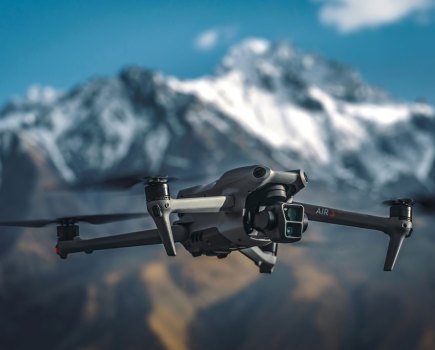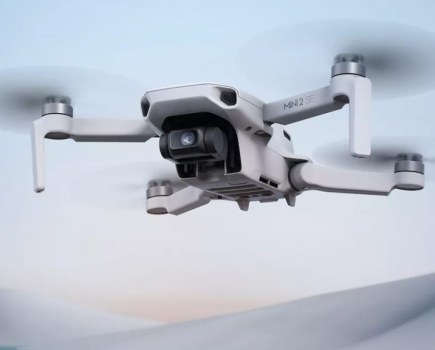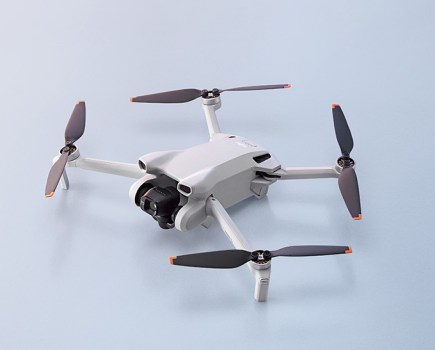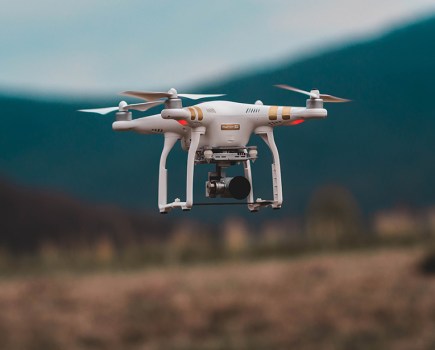
June 13, 2025
This high-spec budget drone makes a great Fathers Day gift
Weighing less than 249g but offering 8K still image and 4K@30fps video capture, the Ruko U11MINI 4K is an ideal pocket drone.
Currently Trending:
Advertisement
Drones are unnamed aerial vehicles, controlled remotely from the ground or pre-programmed to fly automatically to a set route.
Drones have been used by the military for years, and are being looked into for other potential uses, such as delivery services, but are also becoming more and more popular for photography or videography purposes.
Drones are increasingly being used for wedding photography and videography, taking areal shots of the location, and even sometimes, bringing in the rings, taking a video of the event at the same time.
It is also becoming increasingly possible to use GPS to automatically plot routes, making architectural photography a whole lot easier.
Other people using drone photography include anyone wanting to take areal shots of their neighbourhood, holiday location or other scene from an angle that would otherwise not be possible.
You can pick up a basic drone, for as little as £50. Anyone can buy a drone, they are available on the high street, though their use is regulated by certain laws.
Not all drones come with a built-in camera, and so you may need to get recording equipment to attach to your drone, such as the Go-Pro.
For personal use don’t need specific permission, as long as you fly under 400 feet above surface-level, and don’t plan to fly close than 50 metres to people or objects. You also should not fly anywhere near an airport. For further guidance on distance see our article on drone photography and the rules. Provided users adhere to the distance guidance detailed in this article, drones weighing 20kg or less can be used for personal use without approval from the Civil Aviation Authority (CAA). However, they must be flown within ‘visual line of sight of the pilot and away from people, property and congested areas.
Photographers who plan to use a small unmanned aircraft (20kg or less) for commercial purposes require permission from the CAA. The CAA will ask to see an up-to-date operations manual and evidence that the ‘pilot’ is competent, which will include undergoing a flight test and ground-based exam. See the full requirements.
Drones with an operational weight over 150kg – will also have to pay an Assurance of Airworthiness fee.
‘Domestic’ use of images captured by drone are not subject to stringent controls, but if your images are for commercial use you must comply with the Data Protection Act, if the people in the images are identifiable. See what this entails.
See more drones related news and articles:

June 13, 2025
Weighing less than 249g but offering 8K still image and 4K@30fps video capture, the Ruko U11MINI 4K is an ideal pocket drone.

February 15, 2024
Drone photographers! Now's the time to collate your best images as the Drone Photo Awards 2024 are now open for entries!

September 15, 2023
With 15 surefire tips, James Abbott guides you through many of his techniques and processes to capture aerial photos and videos with a drone

August 4, 2023
If you are looking to buy a drone that is easy to use while offering more advanced features as your skill level grows, the Bwine F7GB2 drone ticks all the boxes

July 26, 2023
The DJI Air 3 delivers 48MP photography and up to 4K/100fps video and is the first Air Series mid-size drone support 2.7K vertical video.

March 15, 2023
The entry-level DJI Mini 2 SE weighs less than 249g, transmits up to 10km HD Video and features 31-min max flight time.

December 9, 2022
The DJI Mini 3 has much in common with the DJI Mini 3 Pro that was released earlier this year, but is the more affordable option.

November 2, 2022
DJI's new Mavic 3 Classic drone is available to buy from today and features a Hasselblad camera and can fly for up to 46 minutes.

October 18, 2022
A Cybernews report has found a leaked DJI database including drones' routes, points of take-off, and models and serial numbers.

May 10, 2022
DJI has released its DJI Mini 3 Pro - its most powerful, lightweight and portable Mini camera drone ever - which features an enhanced imaging system
Celebrating all things in the documentary photography and photojournalism!
With world class speakers, you will hear how they have captured some of the world's best known documentary images and how you can too.
• Meet award-winning photographers
• Hear the stories behind the images
• Learn from leading industry insiders